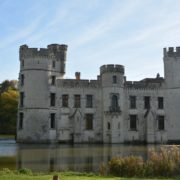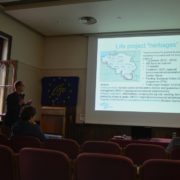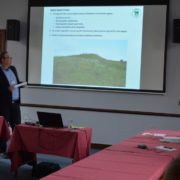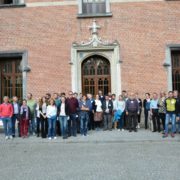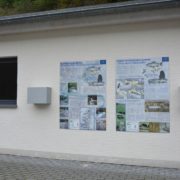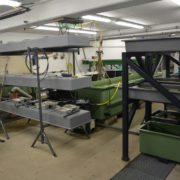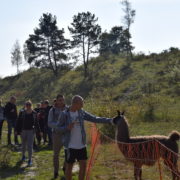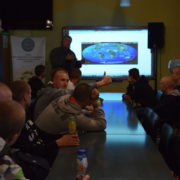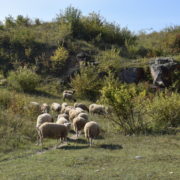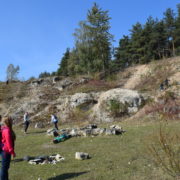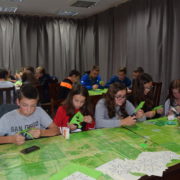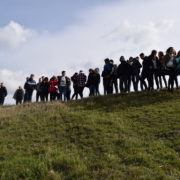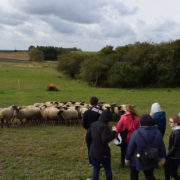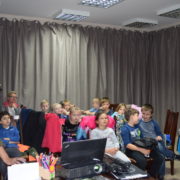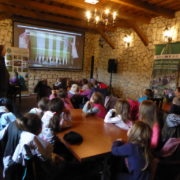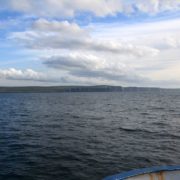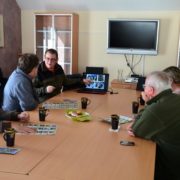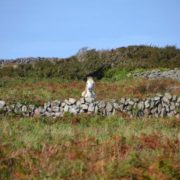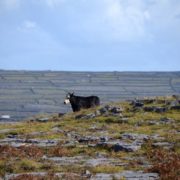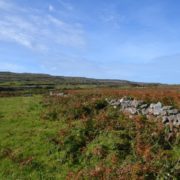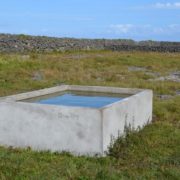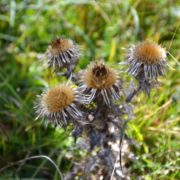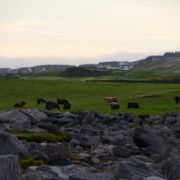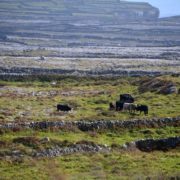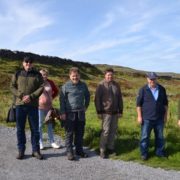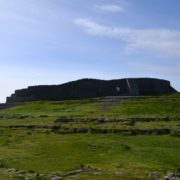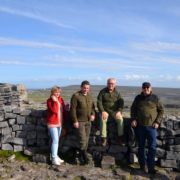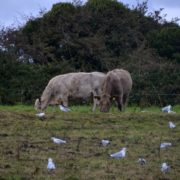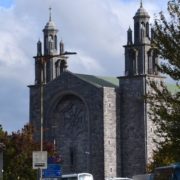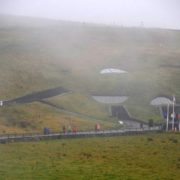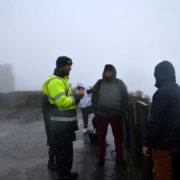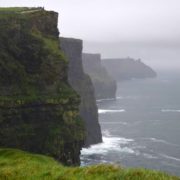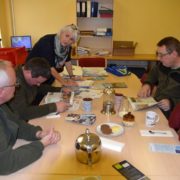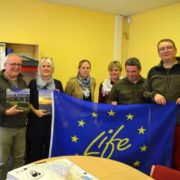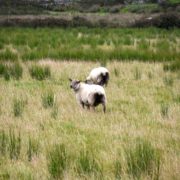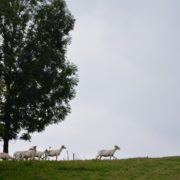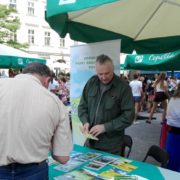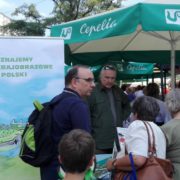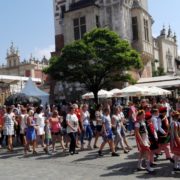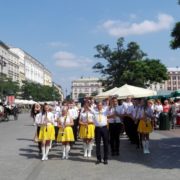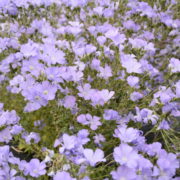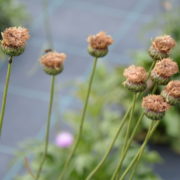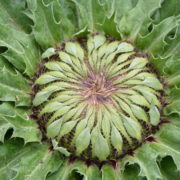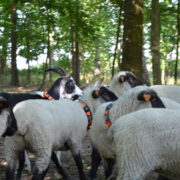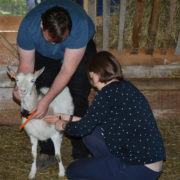News
Species reintroduction
Between 11-12 October 2017, we participated in a meeting entitled “Reintroduction of species: a tool for the restoration of habitats” (LIFE Platform Meeting).
In the Bouchout castle (Kasteel van Bouchout) situated at a picturesque lake in Meise near the northern border of Brussels within the area of the Botanic Garden Meise (Plantentuin Meise), we heard very interesting presentations of various projects relating to reintroduction of species and restoration of valuable natural habitats carried out in Belgium, the Netherlands, Italy, and Poland. We also took part in workshops on the above subject matter. During one of the workshops, we could present the main goals and assumptions of our project and the results we have achieved, especially those regarding the seed plantation maintained by our institution.
In order to acquire both theoretical and practical knowledge, on the way back, we visited our “colleagues” from Luxembourg who are working on the LIFE11 NAT/LU/857 project entitled „Restoration of Unio crassus rivers in the Luxemburgish Ardennes”. After a short visit in the project office in Heinerscheid, we went with two employees to the Our river.In its close vicinity, thick shelled river mussels (Unio crassus) are successfully bred. There, we learned the main assumptions of the project, results achieved, and we saw the breeding methods of this species and necessary equipment.
This visit was related to another LIFE project which we intend to carry out and the reintroduction of thick shelled river mussel will be one of the activities under that project.
Preventive Patrol
A 20-person group from the Youth Education Centre in Podzamcze participated in a preventive patrol, which took place on 29 September in the habitat of xerothermic swards, which are the dominant plant communities on the south-west slope of Garb Pińczowski. This small part of Ostoja Nidziańska PLH260003 belonging to the Natura 2000 network is one of the most valuable natural environments in southern Poland.
The participants observed populations of Carlina onopordifolia Besser and learned the assumptions underlying the protection of valuable natural habitats based on extensive sheep grazing. A visit at an inactive quarry was an opportunity to learn about Pińczów limestones, which were used for centuries as a construction and sculpture material. It was in line with the privilege established in 1559 by the owner of Pińczów, Mikołaj Oleśnicki, which stipulated: “If someone desired to erect buildings of stone or build anything of stone for their own purposes, they shall be allowed, without any payment or without any levy, to quarry stones needed for those purposes on this land”.
Today, the quarry is inactive and there is little sign of the narrow-gauge railway which led to the top of Garb Pińczowski. The attractions, however, include an educational trail and a rich community of thermophilic plants. During the patrol, no signs of illegal rubble dumping within the habitat were observed. The patrol ended with an educational discussion in the office of the Complex of Świętokrzyskie and the Nida River Landscape Parks in Krzyżanowice.
Educational Workshops in Kije
It was the last session of educational workshops for young people. This time, more than 150 people – middle and primary school students – participated in classes for three days in October (3, 4, and 5 October). Classes in small groups took place in “Kasztelania” Local Cultural Institution in Kije, while field observations were carried out on the pasture in Stawiany.
The workshops were attended by young people from Złota, Imielno, and Jędrzejowo. They had the opportunity to broaden their knowledge on the Natura 2000 areas, sheep breeding, and wool processing, as well as learn about the extensive sheep grazing as a way to protect xerothermic swards and xerothermic oakwoods.
The weather did not treat us well, but making a model of Carlina onopordifolia Besser, weaving bracelets, or making bobbles out of colourful yarn turned out to be as interesting an activity as searching for protected species of plants and animals in the field.
Working Visit in Ireland
Networking with other LIFE projects has been defined as obligatory by the European Commission. Interinstitutional collaboration and exchange of experience and information is aimed at acquiring valuable theoretical and practical knowledge, helping the beneficiaries to carry out planned activities effectively. Networking relates not only to national projects, but also international projects. Therefore, between 24 and 28 September, we took part in a working visit in Ireland, where we had the opportunity to learn the effects of as many as three LIFE projects.
Although Ireland is known for fickle weather, Dublin welcomed us with a beautiful and sunny aura. Our destinations were located at the other side of the island, so we spend our afternoon travelling. The first destination was Inis Mór, one of the Aran Islands in Galway Bay. Our host was Patrick McGurn – the manager of the project LIFE12 NAT/IE/000995 Aran LIFE. The meeting began with a presentation of the effects of active protection of habitats:6210-1 Alpine swards and 8210 Limestone rock slopes with Potentilletalia caulescentis communities, which is carried out through such measures as grazing cattle based on a grazing economy management plan developed and implemented. Interestingly, the project was created thanks to a grassroot initiative of local farmers! They pointed out that fields densely vegetated with bushes have negative impact on the landscape values, which reduces the touristic potential of the island. Indeed, during the field part of the visit, we could clearly see the difference between the plots covered by the project and those out of its range. In some places, not only fields, but also boundary walls were completely covered with bushes. The last part of our meeting was a tour of the Dun Aengus hill fort dating back to around 700 BC. What we found interesting was that, as a result of water-induced erosion of the cliff on which the fort is situated, nearly half of the building had collapsed into the sea.
On the second day, we attended a working meeting with Brendan Dunford – the manager of The Burren Programme, which is a direct continuation of LIFE04 NAT/IE/000125 BurrenLIFE – considered by the European Commission the best nature-related project in the history of the LIFE financial instrument. Currently, it covers more than 160 breeding farms operating on the area of ca. 15,000 ha of protected land! The main goal of the meeting was to discuss the adopted strategy called AfterLIFE and its effective implementation. We also learned the core programme and financial assumptions, of which the most interesting issue for us was the method of settling the work of farmers via a protected natural habitat assessment form including a ten-point scale of their quality, developed for the purposes of the project. As on the previous day, we spent the afternoon in the field and saw one of the farms and the effects of many years of cow-grazing in the Burren National Park.
In the evening, we went to Galway – a city which, in the Middle Ages, served as the principal Irish port for trade with Spain and France. At present, it is famous for its strong Celtic traditions: music, songs, dance, and language, which is visible on the designations of buildings, streets, and places.
The last day welcomed us with the typical Irish weather, meaning rain, fog, and wind. Our first destination was the co-beneficiary of LIFE11 ENV/IE/000922 Burren Tourism for Conservation (GeoparkLIFE) – Cliffs of Moher Visitors Experience. Despite the weather, Cormac McGinley introduced us to the project. He described in detail the elements of the project the Cliffs of Moher are responsible for. They are one of the greatest tourist attractions in Ireland. The Cliffs are composed of limestones and sandstones, they stretch for around 8 km, and at the highest point reach the height of 214 m. Thanks to their scenic values, the Cliffs are visited by more than 1.5 million tourists a year! However, the vast majority of them come only to this place, spend there 2–3 hours, and then leave the county. The project LIFE is an attempt at addressing this problem. The project aims to develop highly qualified, high quality tourist industry of the entire region based on areas with particular natural and cultural significance. Carol Gleeson, the manager of the GeoparkLIFE project, told us about the methods of implementing the sustainable tourism development plan, its effects, and difficulties it involves.
Unfortunately, it was the last day of our trip. At 4:00 a.m., we started our trip back to Dublin.
We came back to Poland with a large dose of new knowledge, which will certainly help us carry out the current project, especially the programme assumptions of AfterLIFE, but – above all – we gained new partners, with whom we will be able to work on a joint project.
Conference in Nydek
A conference entitled “Threats in grazing economy” was held on the first days of September in the Beskidy region in Nydek, a town at the Czech side of the border. The Complex of Świętokrzyskie and the Nida River Landscape Parks co-organised the conference under the project entitled “National strategy for sustainable use and conservation of farm animal genetic resources”.
Our black-headed sheep grazed in the Ponidzie region as part of the LIFE+ project is a conservation breed, so that our breeders too found the subject matter of the conference interesting. It was a rare opportunity to confront one’s own experience with the experience of highlanders from the Beskidy region, who have been breeding sheep for many generations.The conference was also an occasion to organise a sheep shearing contests and, at the sheep milk cheese tasting, cranberry produced in Pińczów found its place on the table. Probably not only because nearby Bystrzyca is a partner city of Pińczów, but particularly due to the fact that their taste perfectly goes with oscypki.
International Folk Art Fair
Every August, at the Main Market Square in Cracow, the International Folk Art Fair is held and “Dzień Pińczowa” (Pińczów Day) is planned for that time as well. This year, it took place on 17 August. It has been a long tradition. Another tradition at this grand celebration of folk art is the presence of the Complex of Świętokrzyskie and the Nida River Landscape Parks. We presented our tourist and educational offer and outlined the scope of measures undertaken to protect the xerothermic swards under the LIFE+ project financed by the European Union.
The stands of Country Housewives Clubs from Pińczów abounded with homemade baked goods, while the stage belonged to bands from Ponidzie. We set up our stand under the town hall tower right beside Igor Mitoraj’s “Eros Bendato” sculpture. It is a good spot because the Eros’ head at the Cracow market square is the most favourite spot for making souvenir, family photographs, so it indirectly contributed to the number of visitors at our stand.
Information leaflets, catalogues, maps, educational publications, and promotional gadgets of the LIFE+ projects attracted much attention. Most willing to stop at our stand were lifelong residents of Pińczów, but there were also people who have already been to Ponidzie or even people who have never visited our region and could hardly point it on a map of Poland. When told that it is only several dozen kilometres from Cracow, encouraged by our publications and delicacies from the neighbouring stands, they assured that they would visit us.
Children of course had great fun with the educational colouring books depicting protected plantsand animals, while adults could learn about the goals and assumptions of the LIFE project. Protection of xerothermic swards through sheep-grazing? It sounds incredible for many. Only after seeing our catalogue and hearing our explanations could sceptics be convinced that plants can also be protected by controlled, extensive grazing, which is beneficial both for the protected plants and theherders.
Summer on Plantation
Plants planted last year started to bloom. Sky blue flowers of downy flax can be seen from afar. Capitula of serratula lycopifolia have already changed their colour and its seeds will soon be ready to be harvested. More than a half of Carlina onopordifolia Besser also developed inflorescences. They look spectacular. What a shame the plant dies back after blooming. We can already see that we will have good harvest on our plantation this summer. Spring frosts did not harm the plants and lack of precipitation does not bother them at all. After all, those are plants from xerothermic swards.
Collaboration with the University of Life Sciences in Lublin
Herds grazing in Stawiany i Młodzawy will be tested for parasites. Blood and faeces samples were taken from sheep grazing in those different environments: xerothermic swards and xerothermic oakwood. All that was possible thanks to the collaboration with the University of Life Sciences in Lublin. Furthermore, a four-person group of students from the Faculty of Biology, Animal Sciences, and Bioeconomy conducted three-day observations of the behaviour of sheep and goats. Ten animals wore GPS collars. This allowed precise monitoring of how the animals moved in the field and which places they preferred most for grazing.
The 1st Green Run for Freedom
On Sunday, 4th of June, the first edition of the Green Run of Freedom took place. Its start and finishing line were in Umianowice, near the narrow-gauge railway station, in the place where the Centre of Ecological Education would be created. Its eleven-kilometre route was running along forest roads and paths, and it was covered by over 100 participants, including the ones from neighbouring regions. Apart from medals and certificates, the participants of the Run also received our information materials: brochures, fluorescent bands and linen bags. We presented our information materials also in the “park” tent, where we had classes with children. The organizers declare that the event will be cyclical, so we will have an opportunity to promote our project in the next years.
Green Week 2017
The series of conferences and meetings as part of the 2017 edition of Green Week, the biggest annual opportunity to debate and discuss the European environment policy, was held in Brussels from the 29th of May to 2nd of June. Its central theme was “Green jobs for a more ecological future”, but also the 25th anniversary of the LIFE programme and the Habitats Directive.
During a two-day visit, our team had an opportunity to learn about the best realizations of the LIFE projects from the beginning of the programme implementation and, by networking, establish new, interesting contacts with partners from all over Europe.













